In January 2006, I learned a lesson about computers the hard way.
I had just come home from abroad, and had gotten my roommate to bring my desktop PC back from storage. It so happened that he came home late that night and I had already gone to bed, so he left the chassis in his car overnight, parked on the street. The next morning, I took it upstairs, eager to transfer some files to my laptop, and found the case slightly damp from the morning dew. I just wiped it off, not realizing that dew had also condensed inside the case. I plugged everything in, pushed the power button, and ...
BzZzZzZzZzZzZtTtT... Pffew!
All the lights went out, and a smell of burnt plastic wafted from the case. The apartment fuse had blown, after 3 seconds of the loudest buzzing sound I've ever heard coming from a PSU. Stunned, I opened the case, and found the inside wet from dew. Ohhhh boy.
I was so shocked that I simply closed up the case again and didn't dare to touch the computer again for about half a year.
About 6 months later, my cousin took the drives out, and found that they had survived the disaster. I gladly backed up my files... but feared that the motherboard was probably completely roasted. So I didn't touch it for another half a year...
Finally, in March 2007, I gathered enough courage to try to test if the motherboard survived. I figured the PSU was completely gone, so I bought a new one to replace it. Miraculously, the motherboard booted up without any problems! In fact, I'm using it to write this, right now.
The old PSU, however, was in quite a state. Since warranty was completely meaningless at that point, I opened it up, and saw a harrowing sight:
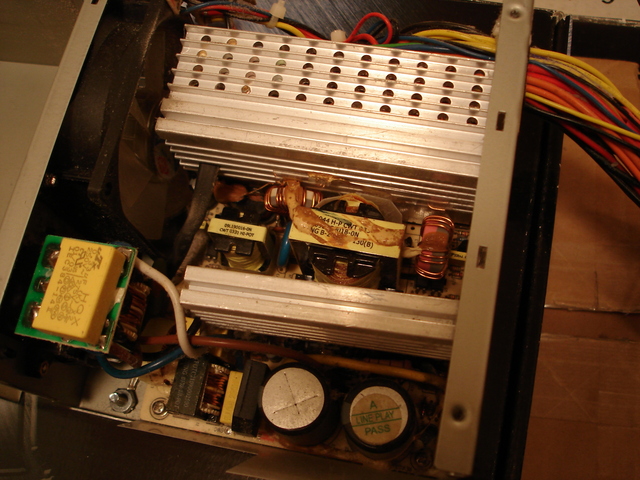
That blob of creamy orange at the centre of the picture is no incompetent soldering; it is resolidified molten plastic that had boiled forth from the short-circuited yellow box underneath during the disaster.
Here's what it looks like closer up:
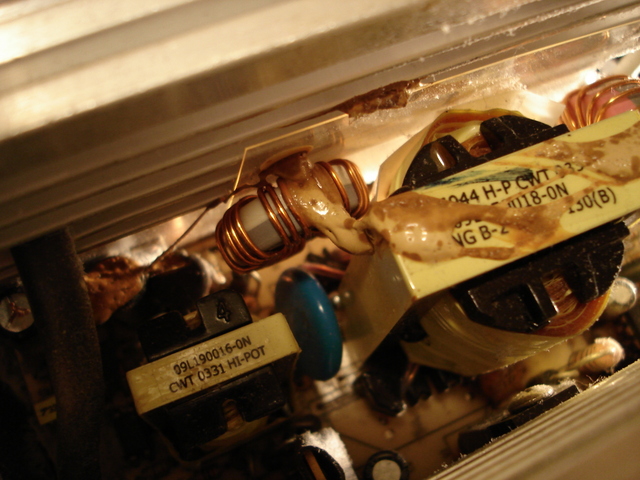
As you can see, the central area in the PSU had some serious plastic melting going. There is a thick trail of molten plastic where there used to be a wire connecting the copper coils to the yellow transformer(?).
Here's another view of the central area in the PSU:
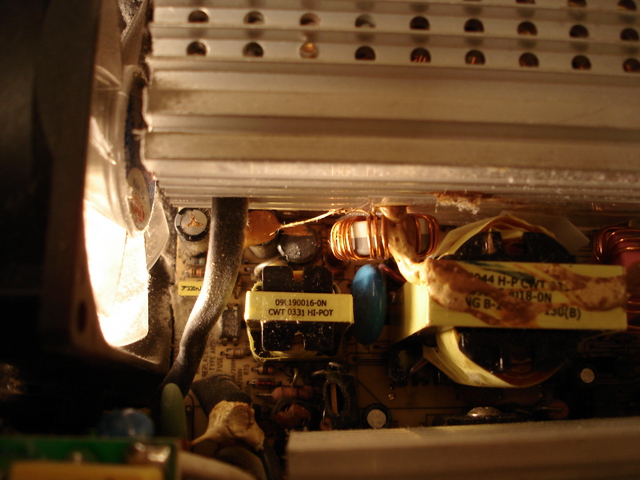
On the left of the copper coils is a thin illuminated strand of white: that appears to be a solidified plastic jet stream that spewed out of some component now covered by brown goo. Yep, this PSU got some serious roasting.
If you've never seen exploded capacitors before, here is what they look like:
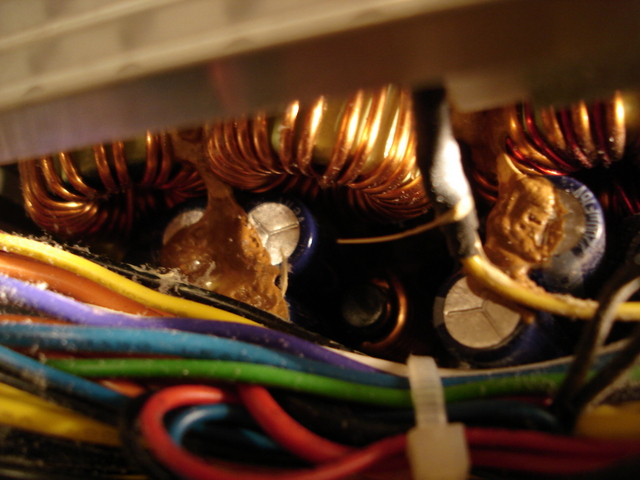
All of that brown goo is the molten stuff that burst forth from within the capacitors during the short-circuit.
Scarily enough, those wires in the foreground were the ones that connected to the motherboard. As you can see below, some of them were connected to parts of the circuit board that had some serious plastic melting:
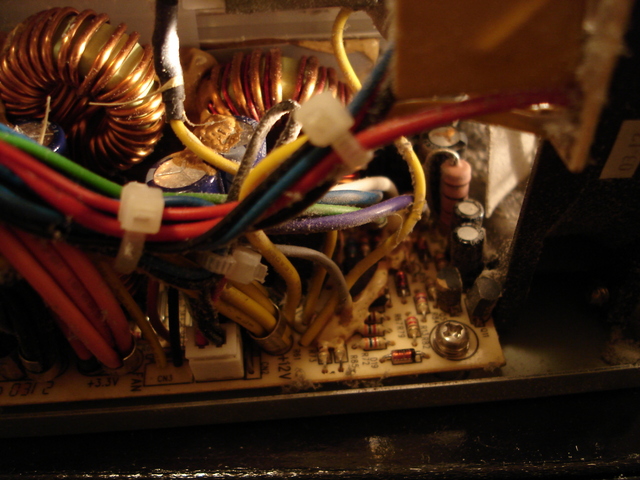
One of the wires directly connected to the part covered by molten plastic also connected directly to the motherboard. I've no idea how the motherboard managed to survive. I'm just glad it did!
Other miscellaneous components that melted:
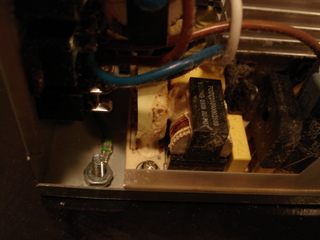
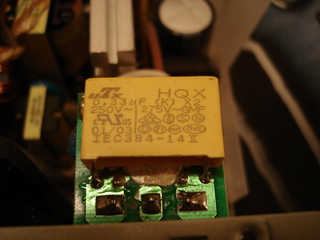
The second photo may not seem all that bad, until you realize that the brownish patch underneath the yellow box is molten plastic oozing out of whatever used to be inside the yellow box. Everything inside has probably completely melted.
So, this is what happens when you try to turn on a PSU wet from morning dew. Don't try this at home, folks. Actually, don't try this at all. You do not want this to happen to your PSU! And you may not be as lucky as I was... the PSU could have caught fire, or exploded, or worse. You don't want to find out the hard way.




